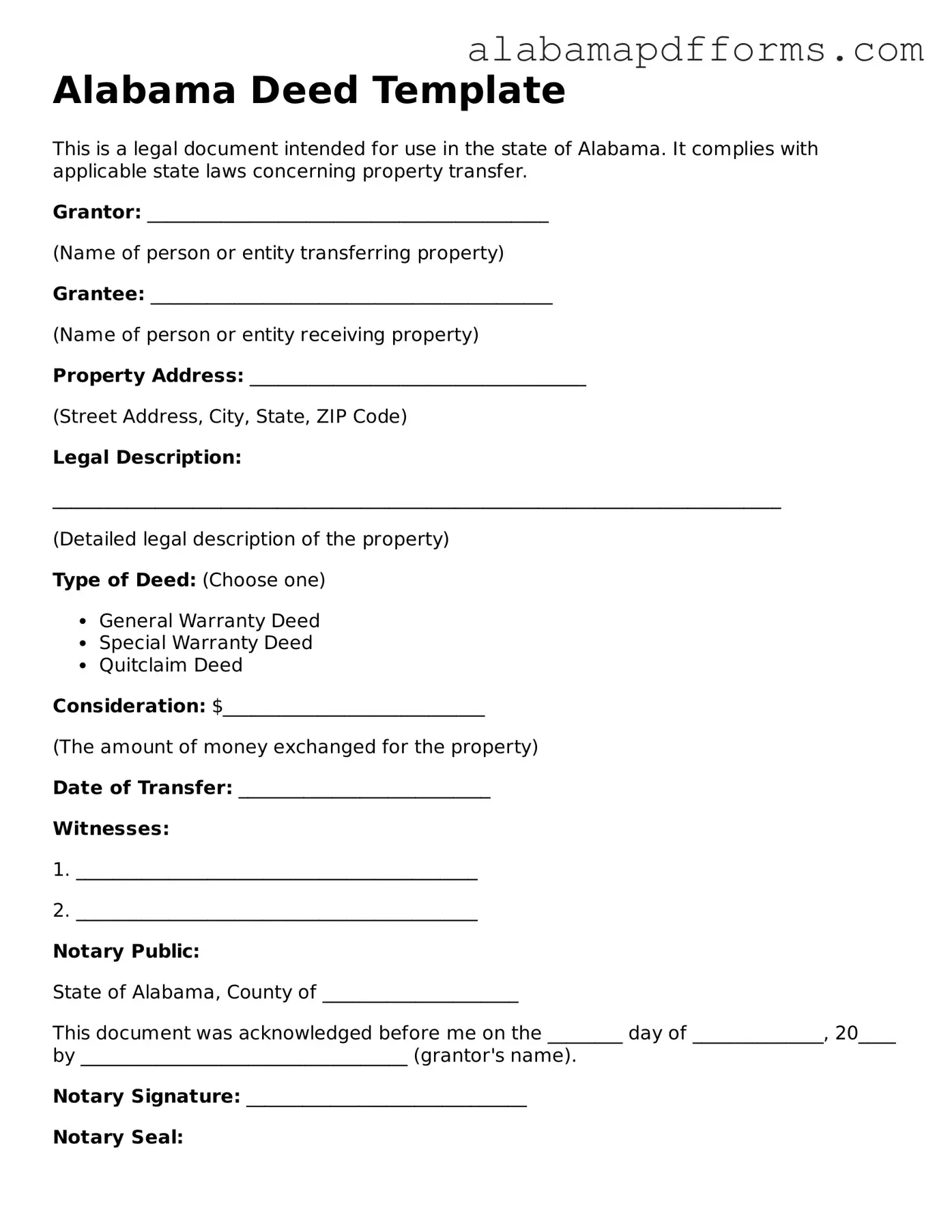Alabama Deed Template
This is a legal document intended for use in the state of Alabama. It complies with applicable state laws concerning property transfer.
Grantor: ___________________________________________
(Name of person or entity transferring property)
Grantee: ___________________________________________
(Name of person or entity receiving property)
Property Address: ____________________________________
(Street Address, City, State, ZIP Code)
Legal Description:
______________________________________________________________________________
(Detailed legal description of the property)
Type of Deed: (Choose one)
- General Warranty Deed
- Special Warranty Deed
- Quitclaim Deed
Consideration: $____________________________
(The amount of money exchanged for the property)
Date of Transfer: ___________________________
Witnesses:
1. ___________________________________________
2. ___________________________________________
Notary Public:
State of Alabama, County of _____________________
This document was acknowledged before me on the ________ day of ______________, 20____ by ___________________________________ (grantor's name).
Notary Signature: ______________________________
Notary Seal:
By signing this document, all parties agree to the terms outlined in this deed. It is recommended to consult with a legal professional for any specific circumstances regarding this transaction.
